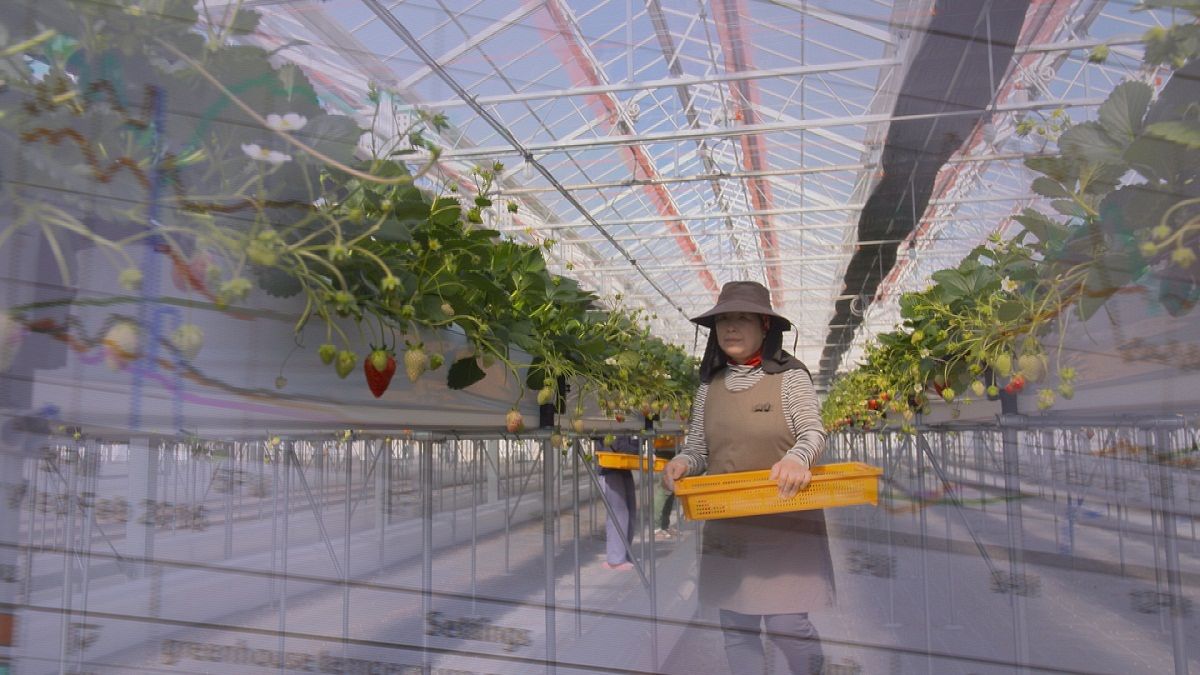In this first episode of “Focus” Special Japan we discover how the Tsunami-struck region of Tohoku has begun to recover, five years after the
In this first episode of “Focus” Special Japan we discover how the Tsunami-struck region of Tohoku has begun to recover, five years after the disaster.
Twenty thousand hectares of prime arable land were destroyed, but today new initiatives have spread around the region, which has seen a surge in state-of-the-art-plants where IT knowledge and farmers’ experience go hand-in-hand.
Strawberry fields forever
Yamamoto is a town that has always been famous for its strawberry production. Here, every single fruit is handled with care, not to say love.

“To women I say treat them like your child and to men I say treat them like your wife,” grins Tadatsugu Hashimoto, an advisor to the General Reconstruction Association.
Tadatsugu has been a strawberry farmer for 40 years and lost everything in the tsunami. His memories of the day the sea swallowed the land are apocalyptic.
“I remember the sea became really dark and then absolutely black, pitch black at the moment when this huge Tsunami wave hit us. It was terrifying.”
He thought he would never work as a farmer again. But when local young IT experts took the bold decision to revive the industry he changed his mind and support came from far and wide.
Yohei Hashimoto is Executive Vice-President of the GRA.
“We started from the point where there was just nothing left or even less than nothing. It would not have been possible to build these greenhouses without the support of many foreign countries. We are extremely grateful,” he says.

The appliance of science
Reconstruction has meant going big, with the strawberries grown in a large-scale computerized facility. Windows open depending on wind direction, the sunshades adjust automatically, and sensors operate sprinklers to optimize the climate for the precious strawberries.
This company is only one example of a movement that has applied unique new farming methods in the region using Information Technology.
Tohoku has been long considered Japan’s granary, well-known for its rice cultivation. Hiroshi Ouchi is one of the farmers who did not give up. Today he continues his family business with his son.
After the nuclear accident in Fukushima radioactivity is a concern for the farmers. All food from the region is monitored.
“I send my rice regularly to the authorities to have it tested. Afterwards I receive the certificate that proves that my results are good and my rice is not contaminated,” says Hiroshi.
Mitsukazu Sakuradani is Reconstruction Planning Co-ordinator at Japan’s Ministry of Agriculture.
“You can see the results of the tests on the government website and I think it is important to provide this data on a scientific basis and to inform the population,” he says.

A new rice age
At the National Agriculture and Food Research Organization, (NARO), in Morioka, Tomoyuki Yukawa and his team of over 100 scientists are working on a cutting-edge project that was launched after the tsunami.
The researchers aim to develop high-quality, low-cost cultivation techniques specifically designed for paddy fields.
“We take samples of the soil from the paddy fields and analyze how many nutrients they contain. It allows us to produce a map of paddy fields with colours showing the different levels of nutrient richness,” says Yukawa.
This allows farmers to only use fertiliser where needed, and find the best places to grow their crops.
The team has even developed tractors with GPS trackers that distribute the exact amount of fertilizer needed by the soil, according to the data collected.
By combining Japan’s strengths of high technology
and traditional agriculture, the region of Tohoku is taking farming to a new level.


